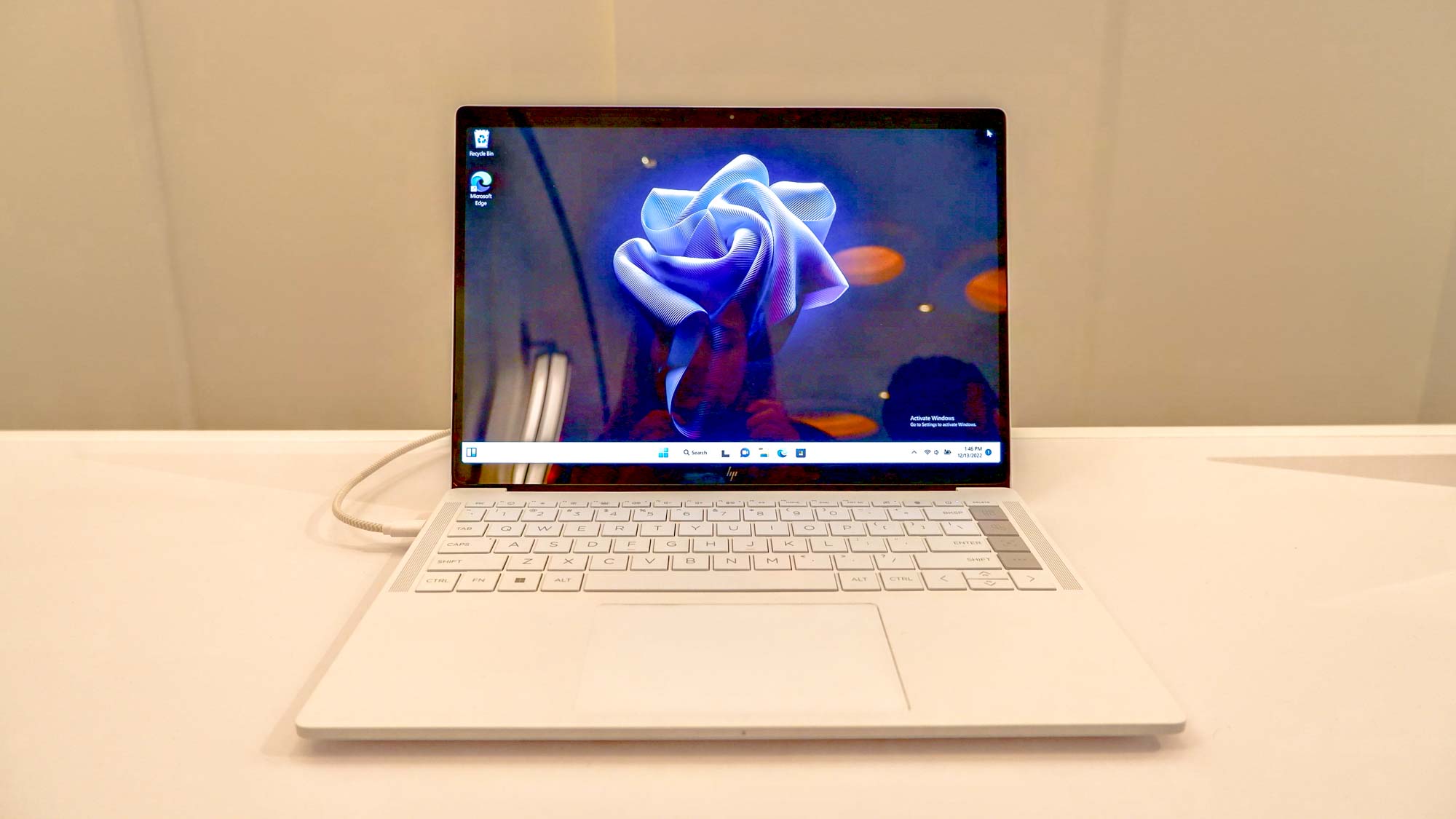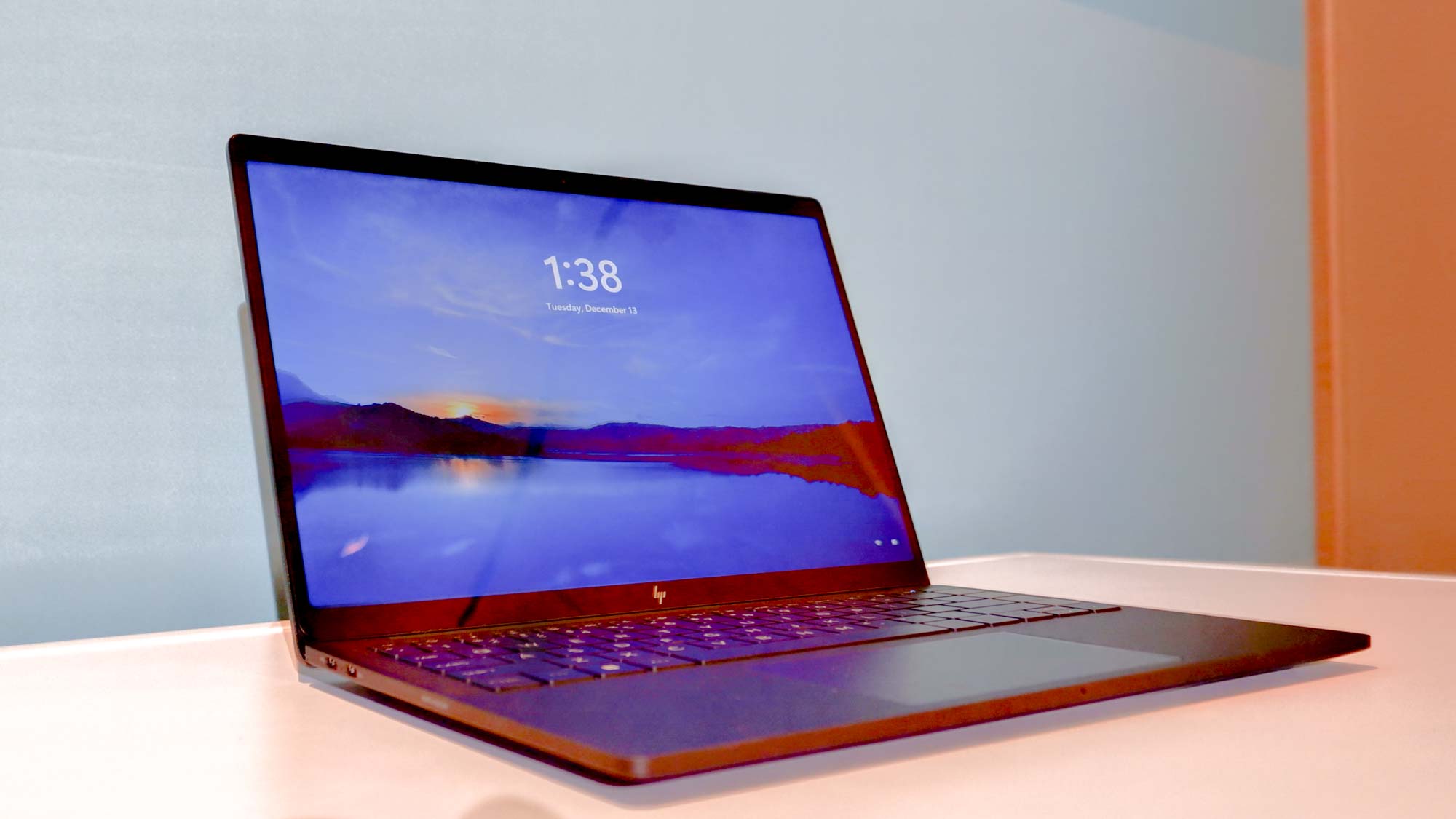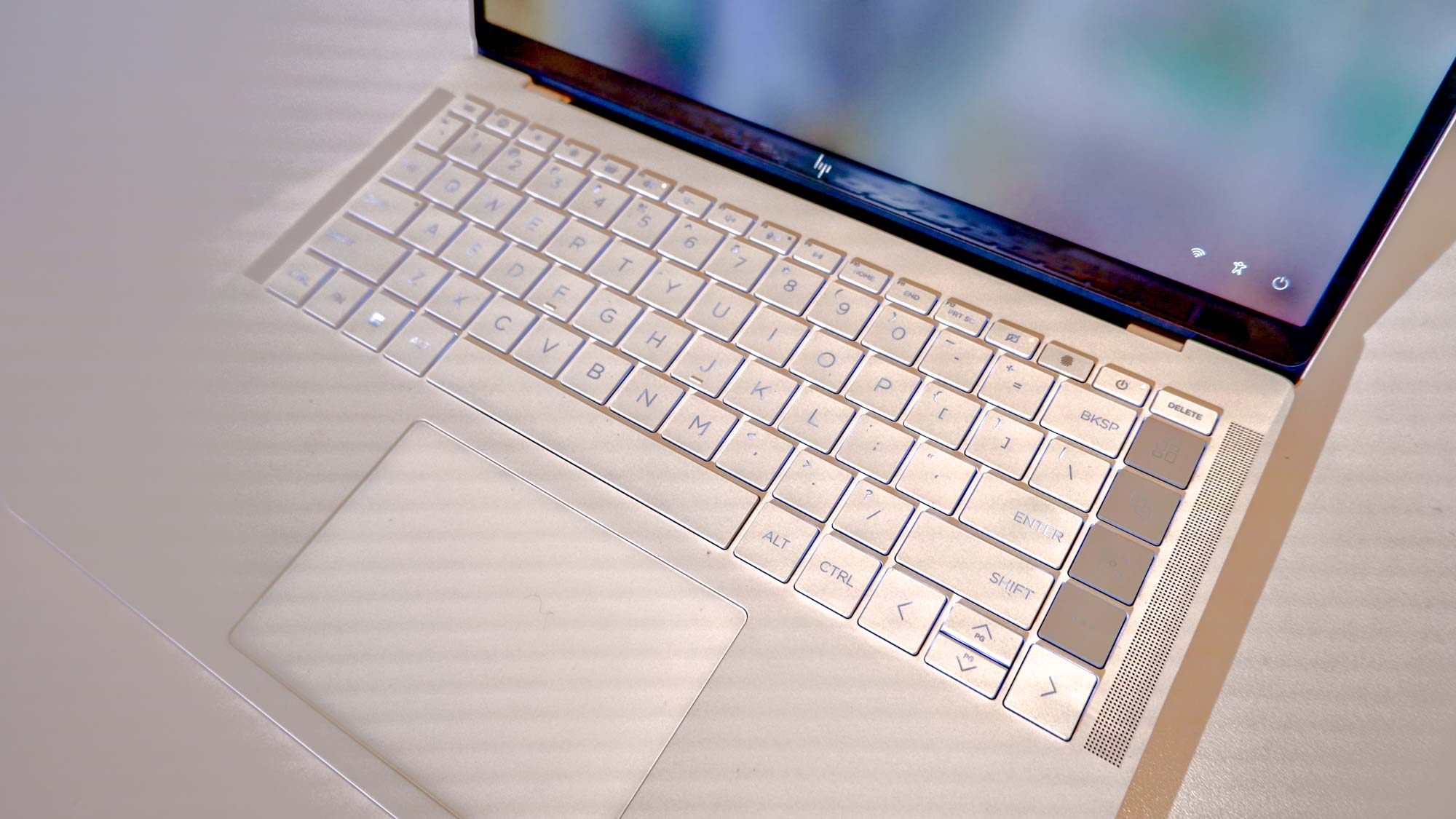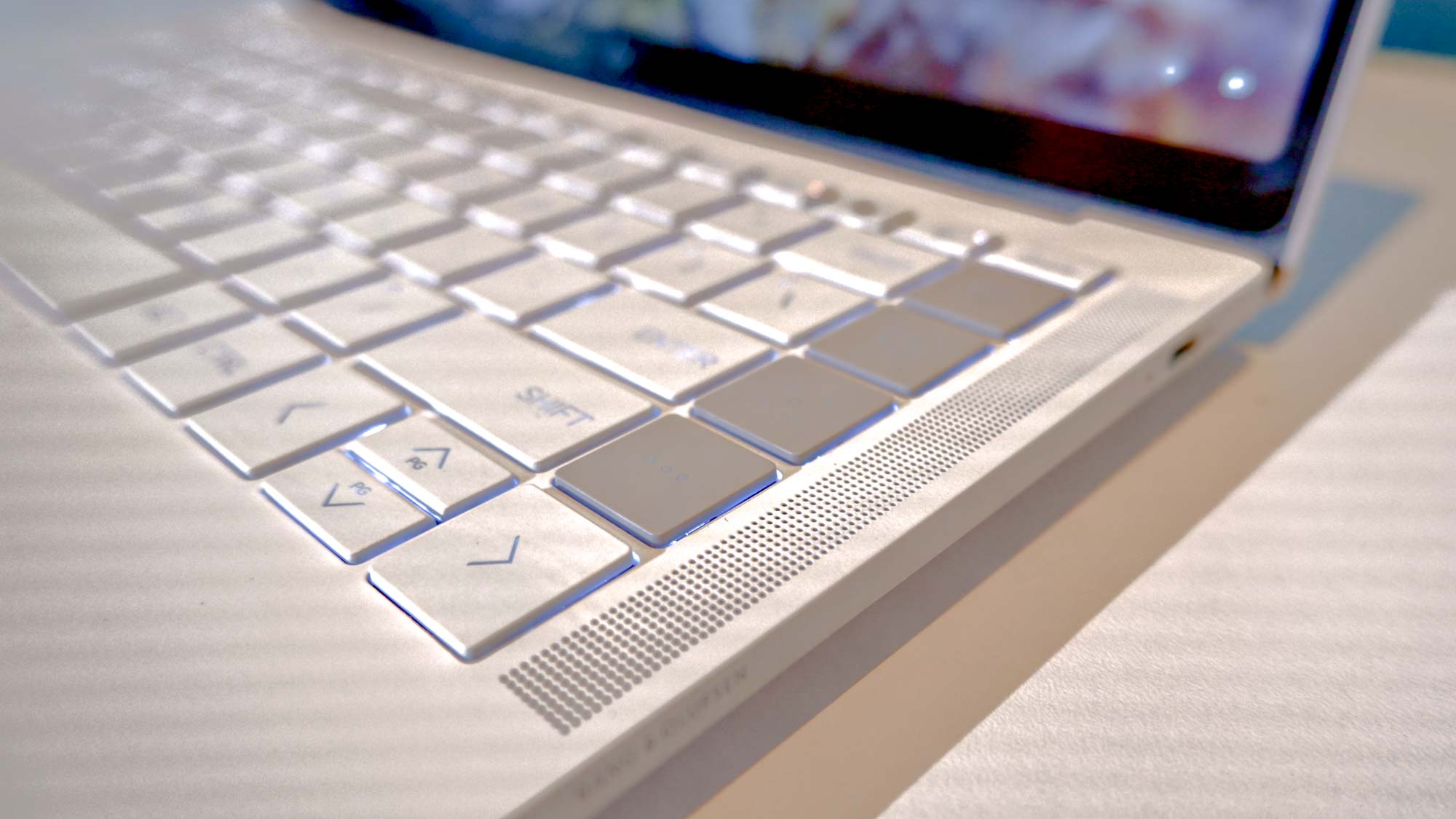The new HP Dragonfly Pro series of laptops were created specifically for freelancers and hybrid workers. What do these groups have in common? They need laptops that can last all day and that are powerful enough to handle their everyday tasks. These folks, as HP described them, might be digitally savvy but not necessarily tech-savvy. Because of that, they’d also want a device that’s simple to use and that provides 24-hour support should a technical issue arise.
Given the rise of remote work during the past three years, a device like the HP Dragonfly Pro makes sense. Last year’s HP Elite Dragonfly G3 was similarly aimed at hybrid workers, but the HP Dragonfly Pro series seems to take things further by providing laptops for a wider range of workers.
I recently got some hands-on time with both the new HP Dragonfly Pro laptops at an HP CES 2023 preview event in New York City. That’s right — there will be two distinct versions available: a Dragonfly Pro running Windows 11 and powered by an AMD Ryzen CPU and a Chromebook using a 12th gen Intel Core CPU.
Although my time with the devices was short, I think they have the potential to end up on our best laptops list. Here’s what I thought of the HP Dragonfly Pro laptops.
HP Dragonfly Pro: Specs
| Row 0 – Cell 0 | HP Dragonfly Pro (Windows) | HP Dragonfly Pro (Chromebook) |
| Price | TBA | TBA |
| CPU | AMD Ryzen 7 7736u | Intel Core i5-1235U |
| GPU | AMD Radeon Integrated Graphics | Intel UHD graphics |
| Display | 1920×1200 | 2560×1600 |
| Memory | 16GB – 32GB | 16GB |
| Storage | 512GB – 1TB | 256GB |
| Ports | 3 USB4 | 4 Thunderbolt 4/USB-C |
| Dimensions | 12.39 x 8.78 x 0.72 inches | 12.4 x 8.7 x 0.7 inches |
| Weight | 3.53 pounds | 3.33 pounds |
HP Dragonfly Pro: Price and configuration
The HP Dragonfly Pro and HP Dragonfly Pro Chromebook are expected to be available on the official HP website (opens in new tab) sometime this spring Pricing will be announced closer to the launch date.
The entry-level Windows Dragonfly Pro packs an AMD Ryzen 7 7736u mobile CPU with integrated AMD Radeon graphics, 16GB of RAM and 512GB of SSD storage. You can upgrade to 32GB of RAM and 1TB of storage if you choose.

The Chromebook Dragonfly Pro only has one configuration with a 12th Gen Intel Core i5-1235U mobile processor and Integrated Intel UHD graphics. It also has 16GB of RAM and 256GB of SSD storage.
This is speculation on my part, but given how these laptops are targeted towards freelancers, I don’t expect they’ll command a premium price. I can see the Dragonfly Pro running Windows to hover around the $1,000 range. The Chromebook laptop should be even more affordable. But, again, those are just guesses.
HP Dragonfly Pro: Design
The HP Dragonfly Pro laptops were created for freelancers and hybrid workers. As such, these notebooks are very thin and light.
The Windows laptop measures 12.39 x 8.78 x 0.72 inches and weighs 3.53 pounds while the Chromebook measures 12.4 x 8.7 x 0.7 inches with a weight of 3.33 pounds. I didn’t find either particularly heavy when I held them.

Both laptops come in either Sparkling Black or Ceramic White. I’m not a big fan of white electronics but I have to admit that I wouldn’t be embarrassed to use the Ceramic White in public. It is very striking. Regardless of which one you get, each Dragonfly has an understated yet elegant look that would fit well both in the office or at a cafe.
HP Dragonfly Pro: Display
Both HP Dragonfly Pro laptops have 14-inch multi-touch enabled IPS displays with a 16:10 aspect ratio. According to HP, each covers 100% of the sRGB spectrum. However, there are some interesting differences between the two laptops’ panels.
Based on the specs HP provided, the Windows laptop has a resolution of 1920 x 1200 while the Chromebook has a resolution of 2560 x 1600. The Windows Dragonfly Pro can supposedly hit 400 nits of brightness, while the Chromebook can apparently top out at 1,200 nits . HP claims this is “the world’s brightest touchscreen display in a Chromebook.” That’s a claim we’d certainly love to put to the test when we perform our screen brightness test.

Subjectively, both screens looked sufficiently bright to me — especially the Chromebook’s display. I can’t vouch for how streaming content or web pages look on the screens, but I don’t believe such content will look bad, especially at the displays’ respective resolutions. But based on my short time with the laptops, the screens seem ideal enough.
HP Dragonfly Pro: Keyboard and touchpad
I found the backlit keyboard provided plenty of space to type on. And while I prefer mechanical keyboards, the keys provided a good level of resistance when pressed. There’s not much I can say here other than the laptops have a fairly decent keyboard, though I’d need more time to cast a concrete verdict.

The touchpad was equally as functional as the keyboard. The mouse cursor moved fluidly and mimicked my movements well. I had little trouble moving my fingers across the touchpad and performing various gestures on the smooth touchpad surface. Again, I didn’t spend enough time to truly gauge the touchpad, but it worked as intended.
I should note that the Windows laptop has a standard backlit keyboard while the Chromebook has an RGB keyboard. I’m not sure why RGB lighting is only available on the Chromebook, but it could be a selling point for some folks. The Windows laptop also has a haptic touchpad, which is neat, if a bit strange.
HP Dragonfly Pro: Ports
I hope you love USB-C because that’s all you’ll get with these laptops. There are three USB-C ports on the Windows Dragonfly Pro and four on the Chromebook version. The Windows laptop has two USB4 ports while all of the Chromebook’s USB-C ports are Thunderbolt 4.
You can read our Thunderbolt 4 vs USB4: What’s the difference? article if you want to know what distinguishes the two port types, but for most people, this shouldn’t provide an issue since the differences are generally negligible.
HP Dragonfly Pro: Battery life
HP says the Windows Dragonfly Pro has up to 16 hours of mixed usage battery life, up to 16 hours of video playback, and up to 12 hours and 30 minutes of wireless streaming. As far as the Chromebook model is concerned, we were told it has “all-day battery life.”
Sixteen hours of battery life would certainly be impressive, not to mention vital for busy freelancers who are constantly on the move. But we’d need to put both Dragonfly Pro laptops through our battery test to see if they last as long as advertised.
HP Dragonfly Pro: Features
The Windows Dragonfly Pro features AMD’s adaptive PMF (platform management framework) technology, which optimizes the laptop’s performance in real-world productivity scenarios. If you’re performing a simple task like web browsing, the laptop will know to consume less power. If you’re doing something that’s more resource intensive, the laptop will provide additional power. This, HP claims, will optimize performance and battery life.

Another interesting feature is one-touch access to HP’s 24/7 live concierge support via one of the laptop’s four dedicated hotkeys. The Control Center hotkey gives you quick access to the device’s most common settings, while the Camera hotkey lets you easily adjust camera settings. There’s also a programmable hotkey you can use to bring up an app of your choosing, and another that gives you access to the aforementioned concierge support.
HP Dragonfly Pro: Outlook
I found the HP Dragonfly Pro a noble effort on HP’s part. The company clearly understands the current world we live in and is developing devices that suit its users’ needs. These new laptops might not have the most mind-blowing specs, but if they can make it easy to get work done from nearly anywhere, then that’ll be a win for everyone.
If you’re interested in other laptops unveiled during CES 2023, we have an Alienware m18 hands-on preview, a write-up about Asus’ new 18-inch gaming laptops and Acer’s new Swift Go ultraportables.